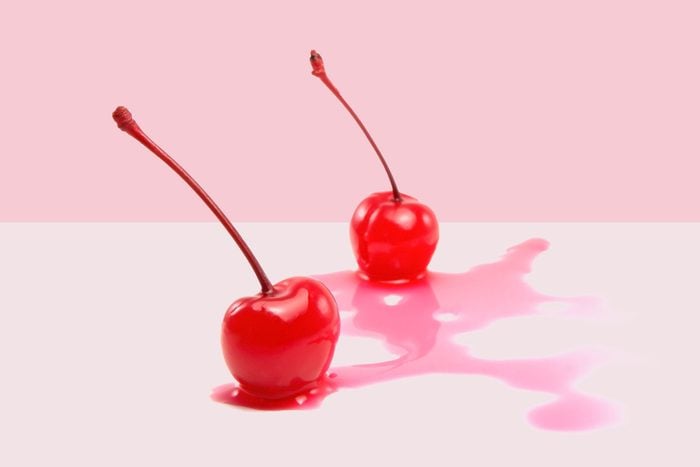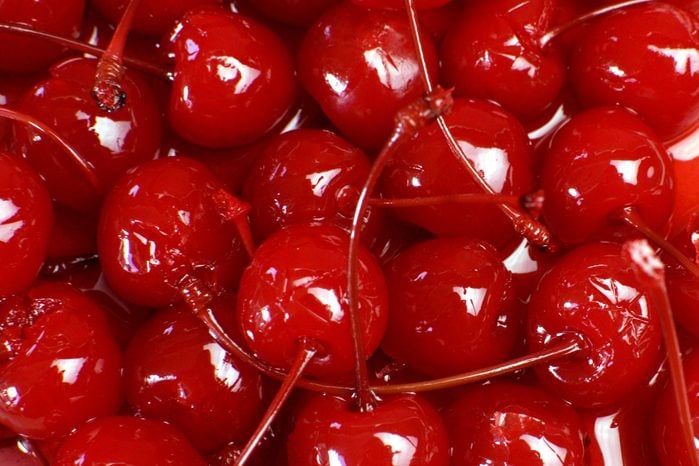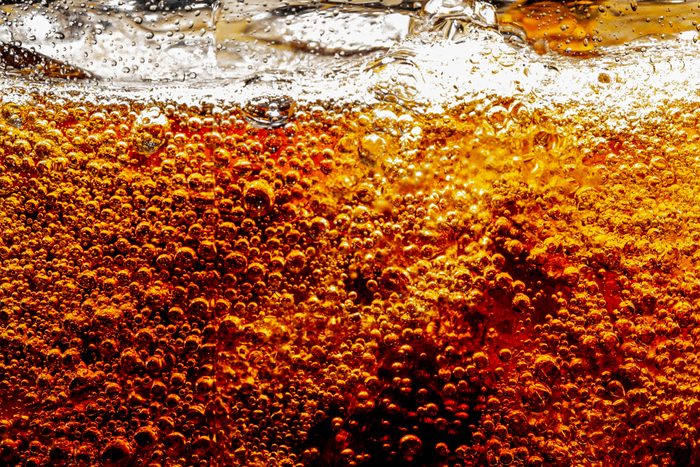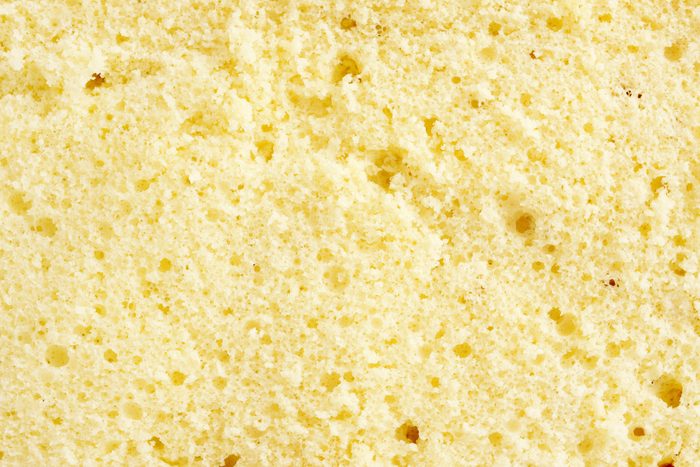
Five potentially toxic food ingredients may soon be banned in New York and California, possibly making the nation’s food supply safer.
The five food additives are considered the “worst of the worst,” Scott Faber, the Senior Vice President of Government Affairs for the Environmental Working Group in Washington, D.C., tells The Healthy @Reader’s Digest. “There are well-documented health harms associated with these additives, and we know there are safer alternatives,” Faber says. “Companies have an enormous pallet of chemicals to make food look good, taste good, smell good, and last for decades. We don’t need these five.”
These additives are mainly found in baked goods, candy and soda, and almost all are banned in Europe. They have been linked to cancer, neurodevelopmental issues and reproductive issues.

1. Red dye No. 3
Red dye No. 3 is used in icing, maraschino cherries, and candies. It has been shown to cause cancer in animals.
Red dye No. 3 is also thought to contribute to behavioral issues such as attention-deficit hyperactivity disorder (ADHD) in kids. The US Food and Drug Administration (FDA) already bans its use in cosmetics.
One safer alternative may be beet powder, if you see it listed among a product’s ingredients.

2. Titanium dioxide
Titanium dioxide—yes, the same chemical that acts a broad-spectrum UV protectant—acts as a whitener, color enhancer, and anti-caking agent in some candies, baked goods, salad dressings, and frozen dairy products.
The European Food Safety Authority stated that titanium dioxide damages genetic material or DNA and can harm the immune system. Titanium dioxide was banned in the E.U. in 2022.

3. Brominated vegetable oil
Brominated vegetable oil serves as an emulsifier in fruit drinks and sodas. Research in rats suggests that brominated vegetable oil acts as an endocrine disruptor and mimics or interferes with the body’s hormones.

4. Potassium bromate
Potassium bromate is primarily found in some baked goods. It acts as a leavening agent and improves texture. Potassium bromate is classified as being “possibly carcinogenic to humans” by the International Agency for Research on Cancer,

5. Propylparaben
Propylparaben is a preservative used in some packaged baked goods. Research suggests that it also acts as an endocrine disrupter and may affect male and female reproductive health.
Safer alternatives may include sorbic acid, potassium sorbate, calcium propionate and phosphoric acid.
If these ingredients are so dangerous, how did they end up in our food supply to begin with?
Many food additives and chemicals are classified “Generally Recognized As Safe,” which means that they can bypass review by the FDA if they have been deemed safe by experts. If concerns arise, the FDA can re-evaluate their safety, but there is a tremendous backlog and this is not a priority for the FDA, says Thomas M. Galligan, PhD, Principal Scientist, Food Additives and Supplements at the Center for Science in the Public Interest in Washington DC. ”The FDA is dropping the ball, and that is why we are seeing states step in,” Dr. Galligan says.
The California bill has passed the House and is now being considered by the Senate. If it is signed it law, it will be the first such ban in the US. The New York bill is making its way through the House and Senate.
While state legislatures weigh the bans, read the fine print on food labels, Faber says. “Moms and dads and caregivers should be able to pick up a bag of Skittles and know that they are safe,” he says.
How the food industry responds
Says Carly Schildhaus, Director of Public Affairs & Communications for the National Confectioners Association, a trade group representing the candy industry in Washington, DC: “The proposals are well-intentioned, but this is not the right way to do it. We should be relying on the science-based rigor of the federal regulatory process—and avoiding a state-by-state patchwork approach related to food additives and ingredients.”
A diet rich in fruits, vegetables, lean proteins and other whole ingredients, and low on processed foods, is best for grownups’ health, as well as children’s.
- Abbott Elementary Star Sheryl Lee Ralph Reveals the Exercise She Learned in Kindergarten That She Still Loves Today
- New Study: The Smell of Your Hands Could Become Criminal Evidence
- The Nestle Toll House “Break & Bake” Recall: How Does Wood End Up in Cookie Dough, Anyway?
- New Study: Here’s How Often You Should Poop To Reduce Your Alzheimer’s Risk
